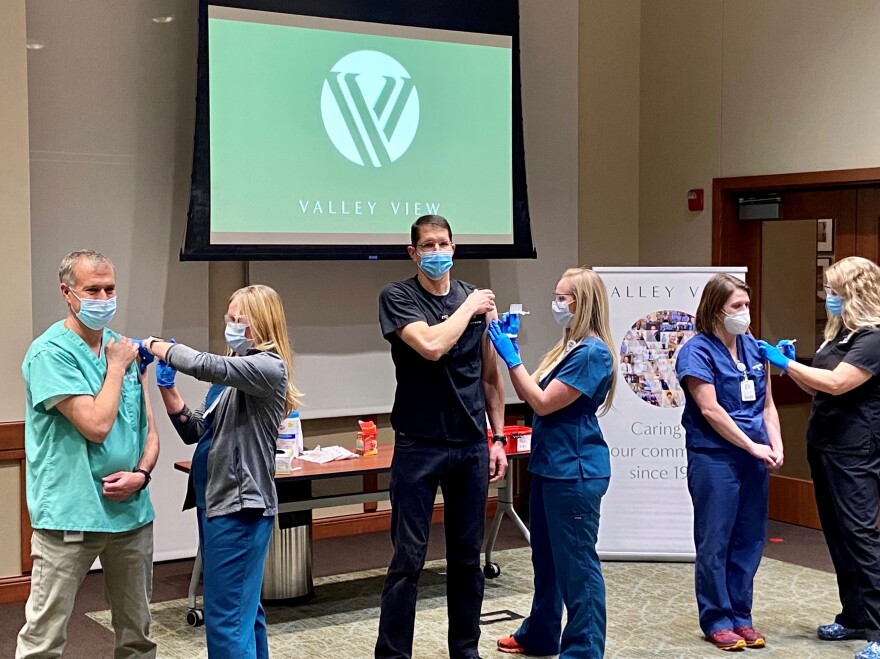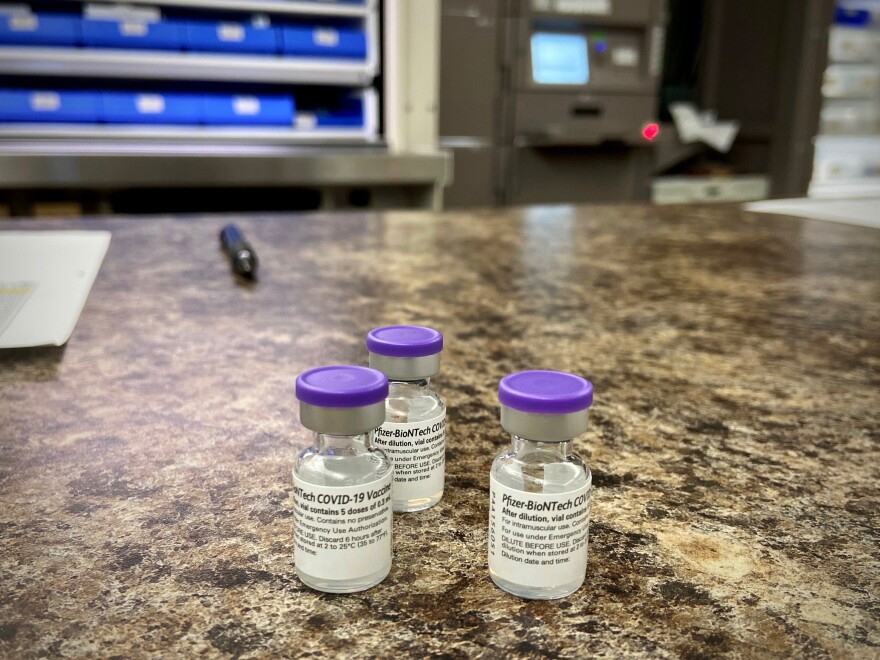The first batch of coronavirus vaccines has arrived in the Roaring Fork Valley, heralded by many as the beginning of an end to the global pandemic that has infected thousands in the area, and created nearly a year of frustration and hardship for local businesses and their employees.
Healthcare workers at Aspen Valley Hospital and Valley View Hospital received doses of the hotly-anticipated Pfizer vaccine this week. A multi-phase plan from the state puts healthcare workers working directly with COVID-19 patients and workers at long-term care facilities at the front of the line to receive vaccines.
“We are beyond enthusiastic,” said Dave Ressler, Aspen Valley Hospital CEO. “Our staff are excited. We feel like we’re making a turn. We can see some light ahead of us.”
Healthy people in the general public will likely have to wait until summer 2021 to get the vaccine.
Free testing was not widely available until months into the pandemic for most parts of the Roaring Fork Valley, but local health officials expect this area’s vaccine rollout to keep pace with the rest of the nation.
“There’s different context here for planning,” said Carlyn Porter with the Pitkin County public Health department. “We’ve been working on this for months now. The vaccine is really the final piece of the puzzle here.”
She said the county has had more time and resources to plan for vaccine implementation than testing, including expanded staff and the hiring of a testing and vaccination analyst.
“We know that there were lessons learned from testing that we are trying to implement in the vaccine rollout,” Porter said. “I absolutely hear those concerns and public health is definitely hearing them and taking those into consideration.”
This week’s vaccine doses arrived amid record-high coronavirus rates in the area. In Pitkin and Garfield counties, the 14-day rolling average for new cases was higher than any other time since the start of the pandemic.

While local hospitals have not been pushed beyond capacity, they are feeling the strain. In Aspen, more than 10 essential healthcare workers have been taken out of work for positive COVID-19 tests, disease symptoms, or quarantine after coming into contact with a person who tested positive. That number is categorized in the hospital’s highest level of concern.
“It couldn’t come at a better time to make sure we’re able to maintain our workforce,” Ressler said, “To be able to take care of our COVID patients that come to the hospital and all of our other patients that come for every other reason.”
Aspen Valley Hospital received 100 doses of the Pfizer vaccine and expects to administer them to its employees within 24-28 hours of their arrival. They were brought to Aspen from Vail, one of nine distribution hubs in the state. It anticipates receiving 500 vaccines from the drugmaker Moderna next week; a Food and Drug Administration panel endorsed that vaccine Thursday.
Garfield County will receive 215 doses of the Pfizer vaccine and 1,600 of the Moderna vaccine in its first batch. Of the Pfizer vaccines, 145 will be adminstered at Valley View Hospital and 70 will go to Grand River Health in Rifle. The vaccines arriving in each county are distributed by the state from a pool of doses allocated by the federal government.
Pfizer’s tests require storage in “ultra low temperature” freezers and must be used within five days of thawing, which makes transporting and storing them difficult. Valley View Hospital acquired one of those freezers during the pandemic in anticipation of the vaccine requirements.
Aspen Valley Hospital had an adequate freezer even before the pandemic, but John Anderson, the hospital’s director of pharmacy, said it is trying to leverage its ability to get Moderna vaccines going forward, which can be kept at room temperature for up to 30 days and allow the hospital to more comfortably space out vaccine administration.

Health experts in the Roaring Fork Valley do not expect any significant challenges to vaccine rollout that are unique to the area, aside from the logistical hurdles surrounding transportation and storage that are ubiquitous throughout the country.
While the bulk of vaccine strategy is dictated by the state in these early stages of its implementation, some intricacies will be left to counties. Birch Barron, Eagle County emergency manager, emphasized the importance of uniformity and collaboration across the Roaring Fork Valley, which falls into three counties.
“As much as we can, we want there to be consistent guidance and implementation across all three counties because so many people live in one county, work in another and send their kids to school or go to a grocery store in another,” he said.
While the state has outlined the order in which different groups of people will be vaccinated, Barron said, the “specifics of what qualifies as a high-risk or critical sector or person” is left partially to local discretion. And although the vaccine will remain free of charge, the county wants to make sure it is offered in a way that is equitably accessible to everyone who is eligible to receive it.
Throughout the pandemic, county policies regarding public health restrictions have differed. Although largely limited to the minutiae of mask laws and gathering sizes, differences in county policy could potentially make pandemic-related rules even more discordant.
Even recently, as climbing infection rates in the area have pushed all three counties into strict capacity limits and business closures under the state’s dial system, Garfield County commissioners created their own set of rules in direct defiance of the state’s – allowing businesses such as gyms and restaurants to operate at 50% capacity, which varies greatly from the state’s guidance mandating a 10% capacity limit.




